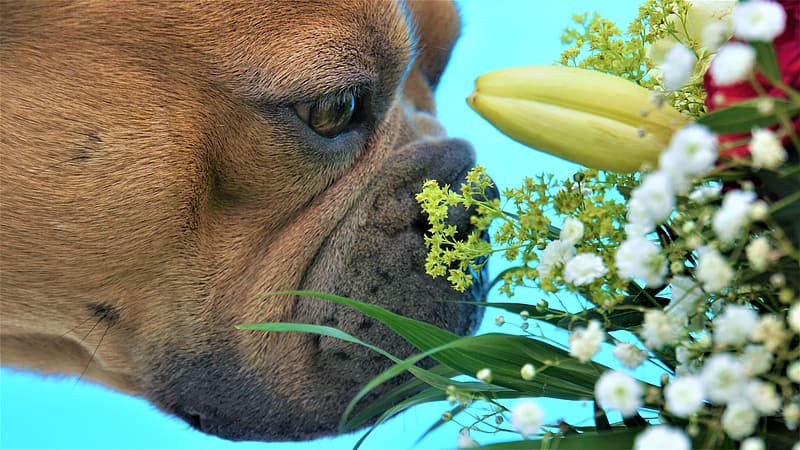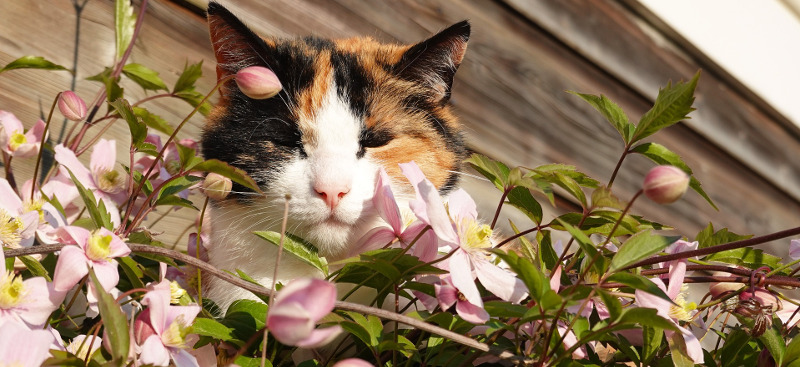Clematis (also called virgin's bower, traveller's joy, & leather flower) are a flowering vine often grown in gardens up a trellis, fence, or on the side of a building. The carefree plants are very popular in growing zones 4 to 9.
The plants contain a chemical irritant called glycoside ranunculin that is converted to protoanemonin when the plant tissues are chewed and macerated. This can cause severe mouth pain if eaten or ingested. The plant also contains small levels of anemonin (irritant glycoside), which is listed as a skin irritant. Skin irritation is not common and many gardeners do not even wear gloves when touching the plants. We do recommend wearing gloves if you experience any skin irritations. Dried clematis flowers only contain anemonin and are therefore not toxic.
Are Clematis Poisonous to Children
Clematis leaves and flowers are both poisonous to children and adults. Most cases of humans being poisoned are from toddlers being curious. If you suspect your child may have consumed part of the clematis, be sure to call the physician right away. Most of the time the side effects will be salivating, upset stomach, vomiting or diarrhea.
Are Clematis Poisonous to Dogs
Puppies and dogs are both susceptible to clematis poisoning. Most of the cases we’ve heard about are puppies being curious and chewing on some of the toxic leaves. However, the bitterness of the leaves will typically prevent any canines from ingesting the plant and getting sick. Side effects include increased saliva, vomiting and sometimes diarrhea. But those typically reside pretty soon after the animal stops eating the plant.

Are Clematis Poisonous to Cats
Clematis are also poisonous to cats and kittens, as they will sometimes chew on the leaves or flowers. The plant is toxic to felines, but we do not hear about cases like this very often. Side effects are typically vomiting and diarrhea in some rare instances.

Are Clematis Poisonous to Other Animals
Clematis will have the same effect on other animals too, including horses, pigs, goats, chickens and other animals on the farm. Thankfully, most animals will not eat clematis due to the bitter taste of the leaves.
Animals that are lactating may produce the bitter tasting protoanemonin in the milk, which would give it an unpleasant taste for a short while.
Symptoms of Clematis Poisoning
Always check with your doctor or veterinarian for guidance if you suspect clematis poisoning. We have never heard or read about any serious poisonings caused by clematis. But here are the common symptoms to look out for.
- Excess salivation & drooling
- Vomiting
- Diarrhea
- Red mucus
- Ulcers or blisters in the mouth
- Dermatitis
Treatment is typically not necessary as the symptoms will typically subside pretty fast.
To prevent anything bad from happening in the first place, you can use physical barriers such as decorative fencing to prevent children or animals from getting too close for a taste. Dogs and cats can sometimes suffer from a nutrient deficiency if they continually gnaw on certain things so it might be time for a thorough check up from your vet to check on your pets health. There are also animal deterrent products on the market that can help prevent animals from chewing on plants.
Pet Poison Helpline
If something were to happen to your furry friend, and you suspect that they are suffering from clematis poisoning, there is a poison control hotline to call for 24/7 vet advice. It is called Pet Poison Hotline, and their phone number is (855) 764-7661.
Click here for a complete list of Pet Safe Plants.
Sources:
"Clematis." American Society for the Prevention of Cruelty to Animals. aspca.org
"Clematis, Virgin's bower, traveller's joy, leather flower." Colorado State University Guide to Poisonous Plants. poisonousplants.cvmbs.colostate.edu
 |
Author Chris Link - Published 2-08-2020 |
